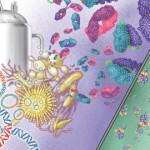NEW YORK (Reuters Health)—The biosimilar LBEC0101 is equivalent to etanercept (Enbrel) in treating patients with rheumatoid arthritis (RA) who respond inadequately to methotrexate, according to researchers from Korea and Japan.
As Dr. Yeong-Wook Song tells Reuters Health by email, “LBEC0101 is comparable in efficacy, safety and immunogenicity profile to Enbrel.” The findings, he adds, could help allow patients access “to this cost-effective anti-TNF drug.”
In a Jan. 22 online article in Annals of the Rheumatic Diseases, Dr. Song of Seoul National University Hospital and colleagues report data from 374 patients (mean age, 54; 85% women) randomized to receive LBEC0101 or etanercept.1
The primary efficacy endpoint, assessed at week 24, was the change from baseline in the disease activity score in 28 joints, according to the erythrocyte sedimentation rate (DAS28-ESR).
The least-squares mean change from baseline in DAS28-ESR at 24 weeks was a drop of 3.01 in the biosimilar group, similar to the 2.86 drop in the etanercept group. The two groups also had similar ACR20 response rates, as well as similar adverse-event rates.
However, development of anti-drug antibodies was significantly less common in the LBEC0101 group (1.6% vs. 9.6% with etanercept). The researchers have not yet established a reason for this difference.
They also caution that because the study was conducted only in Japan and Korea, “the generalizability of the findings may be limited to the Asian population and a longer-term study is warranted.” They go on to say, though, that given the great similarity of the agents, LBEC0101 “is very likely to be insensitive to both intrinsic and extrinsic ethnic factors.”
The investigators are currently conducting an extension study to evaluate the long-term safety, efficacy and immunogenicity of LBEC0101.
Dr. G. Caleb Alexander, co-director of the Center for Drug Safety and Effectiveness at Johns Hopkins Bloomberg School of Public Health, in Baltimore, tells Reuters Health by email, “The study was randomized, blinded and examined both efficacy and safety of these products, all of which should increase confidence in the results. This was a well-done study and supports the comparability (or biosimilarity) of LBEC0101 and etanercept.”
“The study adds to a growing body of evidence suggesting the similarity of TNF-alpha biosimilars and their referent products,” Dr. Alexander adds. “TNF-alpha inhibitors are a common and costly group of biologic therapies. … Of course, the ultimate clinical and economic potential of biosimilars will depend upon a lot more than these types of clinical trials.”


